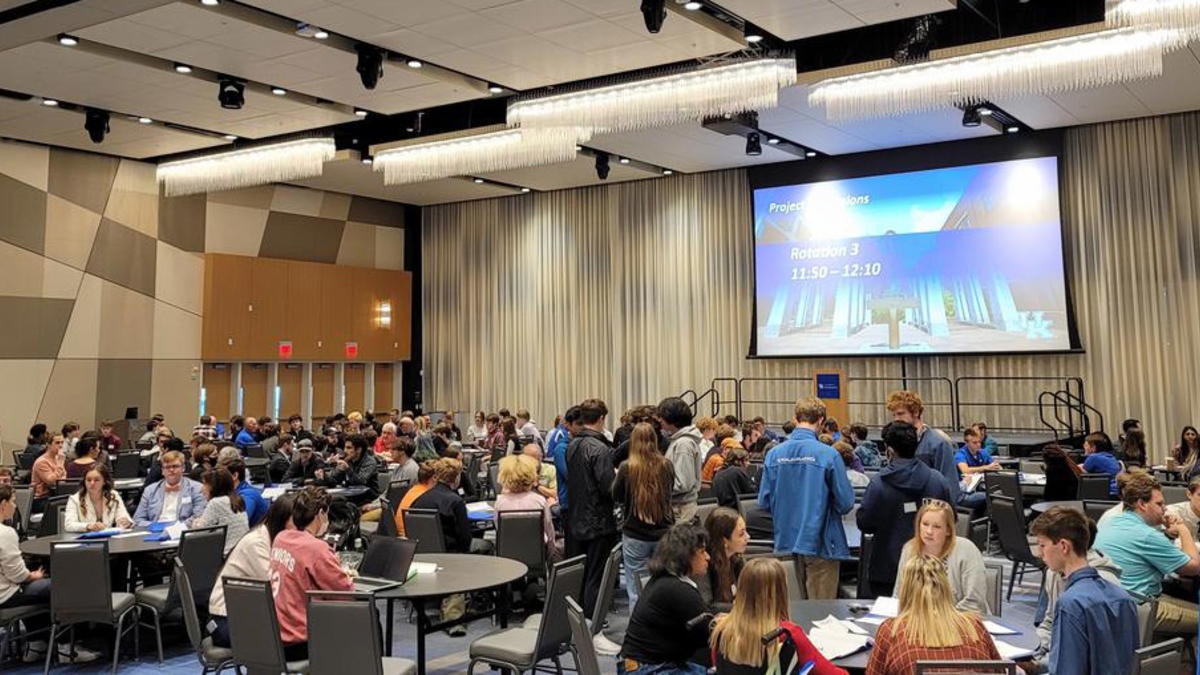Now in its third year, T2E takes the college’s wildly successful First-Year Engineering (FYE) program, required of all freshman engineering students, and applies it to the high school level.
“Our hope is that T2E students come to the UK College of Engineering knowing what to expect from our faculty,” said Doug Klein, an FYE lecturer and director of T2E. “Engineering is a rigorous and hands-on major and allowing students to get a head-start on engineering content and build confidence is a major benefit.”
The UK College of Engineering launched FYE in 2016. The program enables engineering students to take engineering classes during their first year of college. Before the FYE program, engineering students didn’t take engineering courses until their second or third years.
“We noticed that we were losing students after the first year. They would switch from the College of Engineering to a different college because they didn’t enjoy their classes,” said Kim Anderson, the Associate Dean for Administration and Academic Affairs. “But they weren’t actually taking engineering classes! They were taking math and science courses and UK Core. So, we realized that we needed to show these students what engineering actually was, as early as possible. FYE has dramatically improved our attrition.”
With T2E, the UK College of Engineering is implementing the successful FYE model at the high school level.
Each summer, Klein conducts a two-week training course for all the high school teachers who facilitate T2E in their classrooms. Throughout the school year, he develops assignments and videos for high school classrooms, consults with students on project development, and visits classrooms in-person and virtually.
“Even with the limitations caused by the COVID-19 pandemic, I was able to get through 95% of the T2E curriculum,” said Scott Dellinger, an engineering teacher at Elkhorn Crossing School in Georgetown, Kentucky. “Doug provided a Canvas website, office hours throughout the year and was always a phone call or email away.”
Kentucky high schools participating in T2E teach the curriculum in whatever way works best for each school. Some participating high schools have created a standalone twelfth-grade course while others have made it an optional capstone project. Participating high school students pass T2E by scoring at least an 80% on the T2E final exam, completing a design project that passes evaluation from their high school teachers as well as UK College of Engineering faculty, and passing the AP calculus exam. If they enroll at UK, they will receive credit for the first two required FYE courses and enter a modified version of the third.
“I was very lucky to have been given the chance to experience the T2E program,” said Madison Gladstone, a sophomore mechanical engineering student at UK. “I learned fundamental engineering skills I was able to take with me into my first year at UK. I learned how to read and wire circuit schematics, program an Arduino using Matlab, use Autodesk Inventor and even build a professional engineering portfolio.”
On T2E Project Kickoff Day, all participating high school students come to UK with mock-ups of their project ideas during the fall of their senior year. They meet with UK College of Engineering faculty and learn about how their engineering projects will be evaluated.
“On Project Kickoff Day, these high school seniors learn, directly from college engineering professors, what a college-level project looks like,” said Lynn Shoopman-Campbell, a teacher within the Oldham County school system who has taught T2E for two years. “That’s so helpful for them as they are getting ready to make the transition to college. I love witnessing how they—thanks to a built-in support structure—push themselves out of their comfort zones.”
